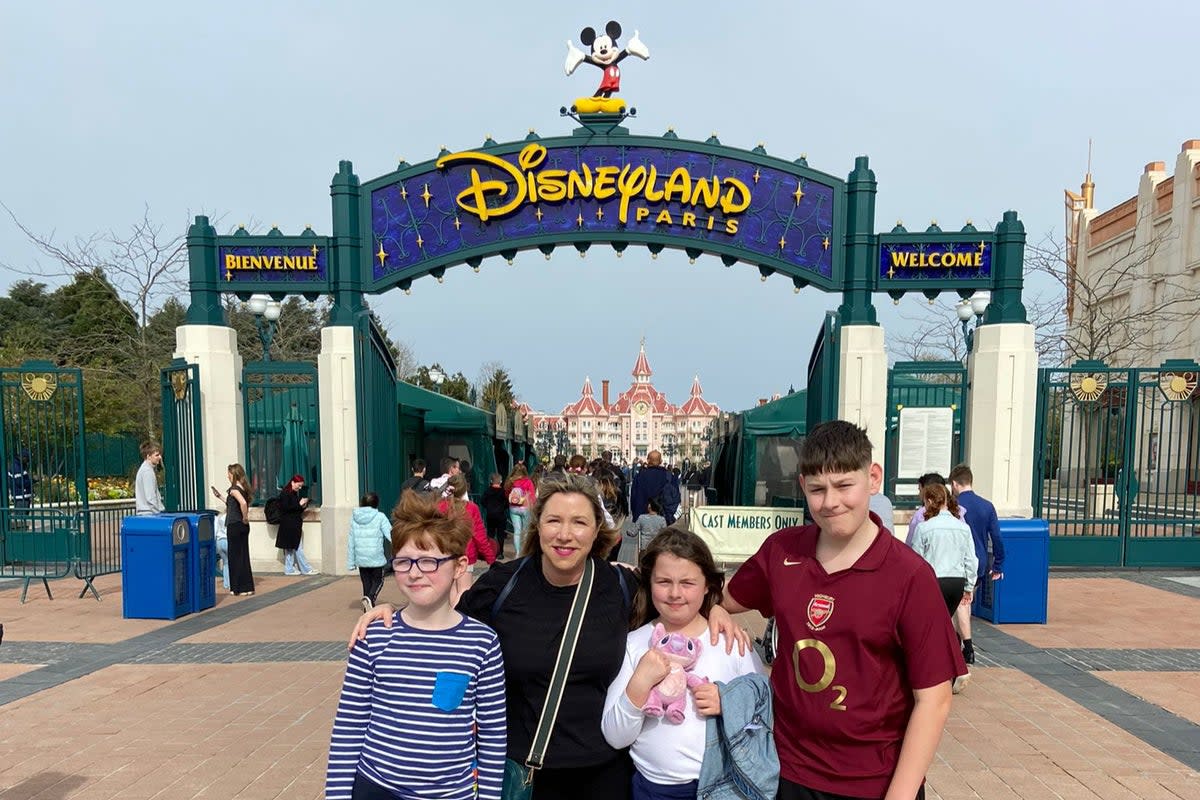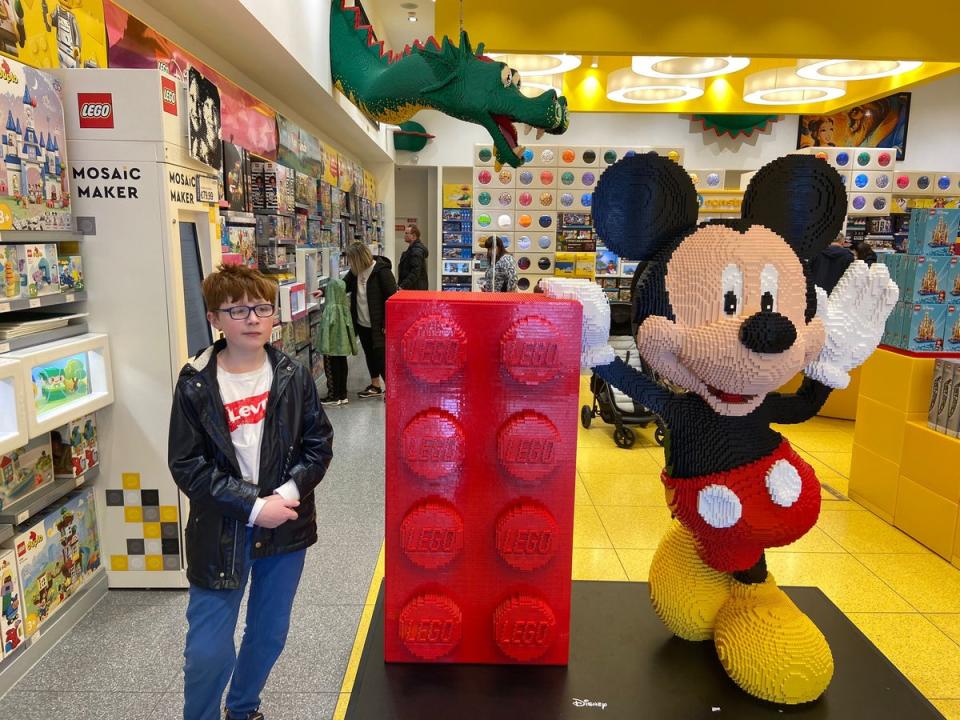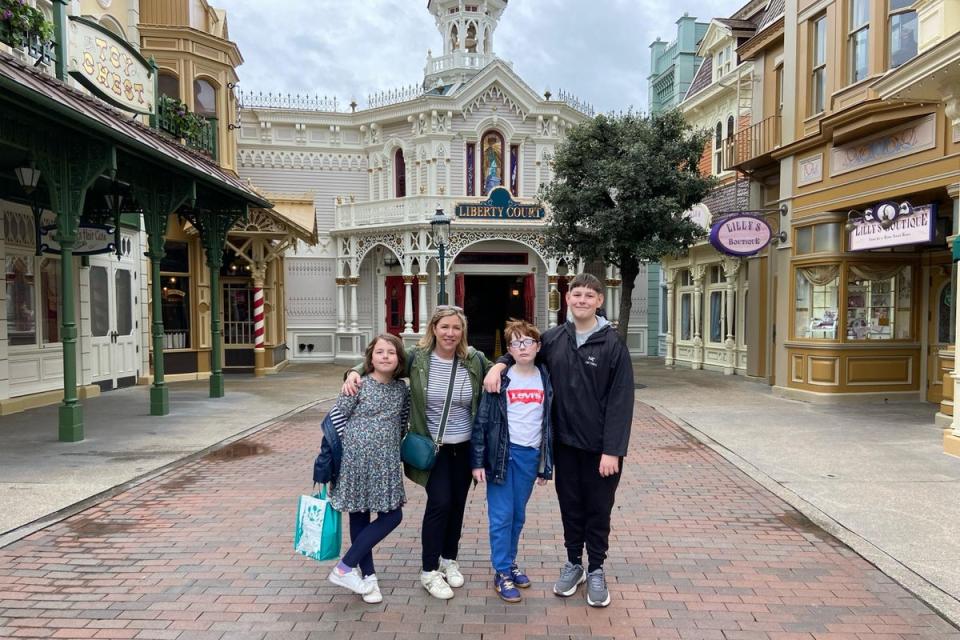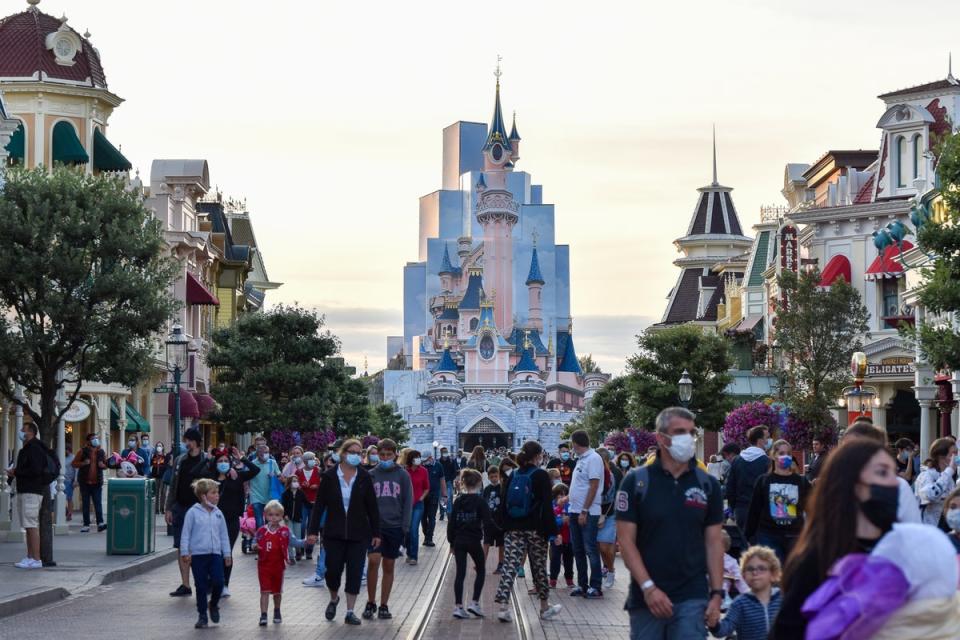I travelled to Disneyland with an autistic child – this was my family’s experience

As we whizzed round the Buzz Lightyear ride in a cable car, shooting pretend laser guns at green aliens and psychedelic creatures from different planets in simulated space, my 12-year-old son Eddie squealed in delight: “This is the best ride ever!”
It’s hard to believe this is the same boy who had become so anxious at his last school, a mainstream primary, he hardly wanted to leave the house for a year. He was diagnosed with autism in 2019 but the ‘A’ word was first mentioned when he was a toddler.
Last June, after a long battle with the local authority, Eddie started a specialist school for children with autism and additional needs, and his confidence has improved hugely. It’s no exaggeration to say it has changed our lives.
So much so, that this year we decided to visit Disneyland Paris rather than hold a party for his birthday. He loves Legoland but we have visited the park twice and didn’t think we could do it for a third year in a row. We thought our other two children, Jemima, nine and Charlie, 15, would love it, too.

We were a little apprehensive. Eddie has something called sensory processing disorder, which means sensory experiences – loud noise, flashing lights, bursts of colours and so on – can be quite daunting for him. When he was younger these sorts of things would inevitably cause a meltdown, but we are able to navigate them better, and even enjoy them, now he is older. He is also very routine driven, so he needs lots of preparation for any new experience or activity.
We tried to prepare him as much as possible by showing him videos of rides beforehand, so he knew what to expect and gave him a visual plan of the park to look at.
The splendour of the huge Disneyland Park entrance, with its waterfalls and pink turrets, was dazzling. We were met by a member of the accessibility team, who ushered us through the gates for people with disabilities, including those with so-called ’invisible conditions’, such as autism. It felt like stepping into the world of Frozen, a land of make believe with shops, a gazebo and even its own little train.
Read more on family travel:
Paris with children: From top attractions to the best hotels for a city break
The best family adventure holidays in Europe that adults, teens and kids will love
The best kids club resorts in Europe: Where to stay for family-friendly fun
We were given a helpful accessibility guide that included advice on the ride times and which restaurants had high sensory levels, such as bright lighting and loud music. When we went back the next day, however, we were told we couldn’t get through without a disability card, something which we don’t currently have.
Many tourist attractions, such as Disneyland, require a card as proof of an invisible disability, which is understandable, but not ideal if you don’t have one but still have a child with a condition. Those with a card also receive ‘Premier Access’ to at least 17 of the 54 rides at the park – brilliant if you have a child who gets upset and agitated in long queues. There is also disability access for those in wheelchairs on seven of the rides.
Without the card, we ended up queuing at the main entrance instead, which fortunately, wasn’t too busy. Premier Access is also available to buy as an add-on, from around €5 a ride or €90 a day per person.

We started with the Spider-Man W.E.B Adventure as we thought that would be a sure-fire hit. Eddie especially loved the spookily realistic hologram of Tom Holland and pretending to catch the spiderwebs with a laser gun. We moved on to the 3D Ratatouille ride, which made us feel as though we were actually in the film’s kitchen, but the simulated Star Wars rollercoaster ride, with a charming French C-3PO, freaked him out a bit.
After a few rides, Eddie was in need of a quiet break. While there weren’t any specific rest areas for him at the park, we were able to find a bench to sit down on and have a breather. We liked the fact there were plenty of toilets dotted around the place, although Eddie, who has a very literal brain, didn’t understand the old fashioned picture signs of men in Regency-style attire and women in long dresses.
Overall, Disneyland Paris can make a wonderful family break if you have a neurodiverse child – but if you want to skip the queues, do make sure you take your disability card with you.
A two day ticket for Disneyland Park and Walt Disney Studios starts at £132 per adult and £123 per child (aged 3–11); under 3s go free.

Where to stay
The Hôtel l’Elysée in Val D’Europe boasts immaculate streets and huge shopping centre – although the identikit French apartment blocks feel a little like The Truman Show set. The town was built as part of a public-private partnership between The Walt Disney Company and the French state, in 1987, and is a bit like the French equivalent of Milton Keynes – less than 30 miles from central Paris.
The fact it was a little distance from the main park meant it provided quieter retreat space for Eddie and the on-site restaurant meant we didn’t need to go out to eat anywhere when Eddie had decided he had had enough for the day. Situated just outside the hallowed Disneyland ‘circle’, it was also more cost efficient – yet only five minutes from the park by a free shuttle bus.
The hotel also has family friendly rooms with adjoining doors, so Eddie could have his own space and down time in the room next to us while we could still keep an eye on him.
Read more: Best hotels in Paris: From Eiffel Tower views to luxury locations


